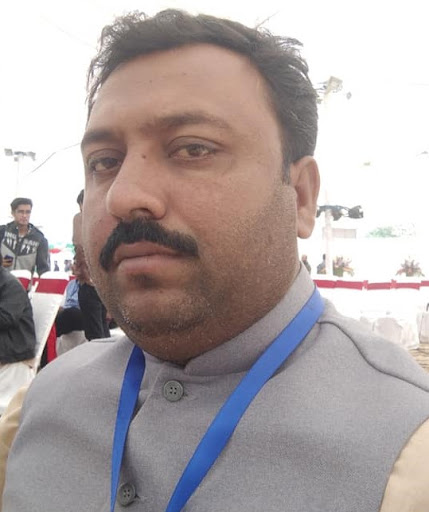Crowdsourced Data From Cell Phones Could Be Used To Ensure The Safety Of Bridges
Sensors similar to those found in common mobile phones might be used to keep an eye on bridges, keeping them from collapsing like the one in India just recently. Smartphones equipped with accelerometers and global positioning system (GPS) sensors might supply engineers with regular, real-time data on bridge vibrations and warn them of changes in integrity. So, crowdsourced data from cell phones could be used to ensure the safety of bridges.
Author:Suleman ShahReviewer:Han JuNov 07, 202217.1K Shares684.2K Views

Sensors similar to those found in common mobile phones might be used to keep an eye on bridges, keeping them from collapsing like the one in India just recently. Smartphones equipped with accelerometers and global positioning system (GPS) sensors might supply engineers with regular, real-time data on bridge vibrations and warn them of changes in integrity. So, crowdsourced data from cell phones could be used to ensure the safety of bridges.
You may check the condition of the bridge without taking your phone out of your pocket. Smartphone components like accelerometers and global positioning systems may reveal the bending and vibration of a bridge. Researchers report on November 3, when cars cross over into the field of communication engineering.
Measuring apps may help keep roads safe by notifying authorities of the need for bridge maintenance. Like the terrible footbridge collapse in Gujarat, western India, on October 30 and the bridge span collapse in Pittsburgh, Pennsylvania, in January, the technologymay be used to warn of or avoid such catastrophic collapses.
How Crowdsourcing Monitor Bridges
Lack of knowledge about the bridge's structural qualities is a common cause of its collapse. Increasing the frequency of monitoring is the only method to mitigate such doubts. In order to collect massive amounts of information on bridges all around the world, crowdsourcing data from mobile phones may be the best and only option.
“„This is really applicable to any type of bridge. All you need, he says, is a way to get a smartphone on there — whether by car, in the pocket of a pedestrian or mounted to a scooter — and some way of monitoring the devic.- Thomas Matarazzo, U.S. Military Academy at West Point in New York
In the United States alone, there are more than 600,000 bridges. According to Matarazzo, most bridges are evaluated visually once a year at most, since dedicated sensors that check for structural faults are costly.
Using basic mobile phone applications to keep track of bridge conditions might make maintenance more efficient than with human inspectors alone and far cheaper than with sophisticated sensors. Matarazzo and his coworkers think that if bridges were monitored in this way, they would last about 15 years longer than if they weren't. Older bridges would live a few years longer.
Matarazzo drove 102 times over the Golden Gate Bridge in San Francisco while mobile phones were installed to see how successfully they could monitor the structure. Together with his team of researchers, he rode in an Uber for 72 rides over the suspension bridge and gathered information from the drivers.
Drivers in Ciampino, Italy, recorded data during 280 trips over a 30-meter-long concrete bridge so that researchers could compare it to the way drivers usually drive over motorway overpasses. The vibrations registered by the mobile phone sensors were within a few percent of the data provided by the specialized equipment affixed to both bridges.
Matarazzo claims that a single mobile phone pass may collect as much data on a bridge as a hundred or more fixed sensors. This is because, unlike fixed points along a bridge, mobile devices can keep collecting data as people walk over it.
Researchers might collect significantly more data, resulting in incredibly exact measurements, if they could enlist the help of transportation corporations, government vehicle operators, or the general public. Most modern smartphones are equipped with both an accelerometer and a GPS, making it possible to gather data for next to nothing.
Huili Wang, a civil engineer at China's Dalian University of Technology who was not involved in the research, believes that cell phones might help monitor bridges that lack embedded sensors. But he wonders whether smartphones can ever provide absolute precision. Nevertheless, it is a better technique for a preliminary approximation without adding additional sensors.
“„Crowdsourced data probably won’t entirely replace dedicated sensors for monitoring bridges. But cell phones are unbeatable in a few ways. The advantage is in the convenience and the scale…. It’s a mobile-sensing system that’s already in place.- Matarazzo

What is Crowdsourcing?
Final Words
Bridges play an important role in the transportation system. Instead than checking on bridges every few years, it is essential to look at changes in them that might occur in days and weeks. Since this is made possible by technological advancements, we may proceed with this plan.

Suleman Shah
Author
Suleman Shah is a researcher and freelance writer. As a researcher, he has worked with MNS University of Agriculture, Multan (Pakistan) and Texas A & M University (USA). He regularly writes science articles and blogs for science news website immersse.com and open access publishers OA Publishing London and Scientific Times. He loves to keep himself updated on scientific developments and convert these developments into everyday language to update the readers about the developments in the scientific era. His primary research focus is Plant sciences, and he contributed to this field by publishing his research in scientific journals and presenting his work at many Conferences.
Shah graduated from the University of Agriculture Faisalabad (Pakistan) and started his professional carrier with Jaffer Agro Services and later with the Agriculture Department of the Government of Pakistan. His research interest compelled and attracted him to proceed with his carrier in Plant sciences research. So, he started his Ph.D. in Soil Science at MNS University of Agriculture Multan (Pakistan). Later, he started working as a visiting scholar with Texas A&M University (USA).
Shah’s experience with big Open Excess publishers like Springers, Frontiers, MDPI, etc., testified to his belief in Open Access as a barrier-removing mechanism between researchers and the readers of their research. Shah believes that Open Access is revolutionizing the publication process and benefitting research in all fields.

Han Ju
Reviewer
Hello! I'm Han Ju, the heart behind World Wide Journals. My life is a unique tapestry woven from the threads of news, spirituality, and science, enriched by melodies from my guitar. Raised amidst tales of the ancient and the arcane, I developed a keen eye for the stories that truly matter. Through my work, I seek to bridge the seen with the unseen, marrying the rigor of science with the depth of spirituality.
Each article at World Wide Journals is a piece of this ongoing quest, blending analysis with personal reflection. Whether exploring quantum frontiers or strumming chords under the stars, my aim is to inspire and provoke thought, inviting you into a world where every discovery is a note in the grand symphony of existence.
Welcome aboard this journey of insight and exploration, where curiosity leads and music guides.
Latest Articles
Popular Articles